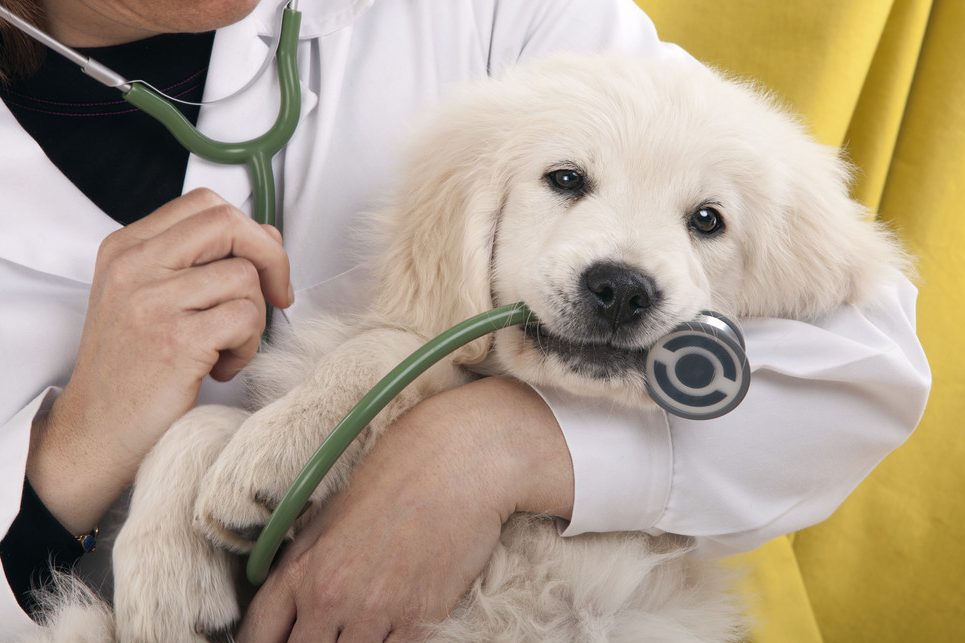Introduction:
Diabetes in pets, particularly in dogs and cats, is becoming an increasingly common health condition. Just like in humans, diabetes in pets occurs when the body is unable to properly regulate blood sugar levels, either due to insufficient insulin production or insulin resistance. This condition can lead to a variety of symptoms, including excessive thirst, frequent urination, weight loss, and fatigue. If left unmanaged, diabetes can cause serious complications, including kidney disease, cataracts, and even death.
Fortunately, with the right dietary management and proper medical care, diabetic pets can lead happy and healthy lives. One of the most effective ways to control blood sugar levels and manage diabetes in pets is through a carefully planned and scientifically formulated diet. In this article, we will explore the role of diet in managing pet diabetes, the best dietary practices for blood sugar control, and how to monitor and adjust your pet’s diet to ensure effective diabetes management.
1. Understanding Pet Diabetes
Diabetes in pets is most commonly classified into two types:
- Type 1 Diabetes (more common in dogs): This form of diabetes occurs when the pancreas fails to produce enough insulin, a hormone that helps regulate blood sugar levels.
- Type 2 Diabetes (more common in cats): This form of diabetes occurs when the body’s cells become resistant to insulin, leading to elevated blood sugar levels.
Regardless of the type, the goal of diabetes management is to regulate blood sugar levels and ensure that they remain within a healthy range. One of the key components of achieving this goal is managing your pet’s diet, as the food they eat directly impacts their blood sugar levels.
2. The Role of Diet in Managing Diabetes
The primary aim of a diabetes-friendly diet is to stabilize blood glucose levels by preventing rapid spikes or drops in blood sugar. Diet can help achieve this by focusing on the following principles:
a. Consistent Carbohydrate Intake
Carbohydrates are the primary source of glucose (sugar) in the body. For diabetic pets, managing carbohydrate intake is crucial. Diets that are high in simple sugars or refined carbohydrates can cause rapid increases in blood sugar levels, leading to insulin resistance and more severe symptoms.
What to Look for:
- Complex Carbohydrates: Foods containing complex carbohydrates, such as whole grains and vegetables, are digested more slowly, leading to a gradual release of glucose into the bloodstream. This helps prevent blood sugar spikes.
- Fiber: High-fiber diets are beneficial for diabetic pets because fiber helps slow the absorption of glucose. This can lead to more stable blood sugar levels and better management of the condition. Foods rich in fiber, such as sweet potatoes, pumpkin, and barley, are great options.
What to Avoid:
- Simple Carbohydrates: Avoid foods that contain refined grains, such as white rice, corn, and wheat, as these are quickly converted into glucose and can cause blood sugar spikes.
b. High-Quality Protein
Protein plays an important role in managing diabetes because it has minimal impact on blood sugar levels. Additionally, it helps maintain muscle mass, which is important for overall health. Lean proteins such as chicken, turkey, fish, and eggs are great options for diabetic pets.
Why It’s Important:
- High-quality protein helps stabilize blood sugar by preventing excessive weight loss, which is common in diabetic pets.
- Protein helps to slow the absorption of carbohydrates, resulting in more stable blood sugar levels.
- Diabetic pets, especially those that are overweight or obese, may benefit from protein-rich diets to help manage weight and improve insulin sensitivity.
c. Healthy Fats
Fats are another important component of a balanced diet for diabetic pets, but it is essential to choose healthy fats. Fats are digested slowly and do not cause rapid spikes in blood sugar, making them a good energy source for diabetic pets.
What to Look for:
- Omega-3 Fatty Acids: These healthy fats are found in fish oil and flaxseed oil, and they have anti-inflammatory properties that can help manage insulin resistance and improve blood sugar regulation.
- Monounsaturated Fats: These healthy fats, found in olive oil and avocados, also help maintain stable blood sugar levels and improve overall health.
What to Avoid:
- Trans Fats and Saturated Fats: These fats, often found in processed pet foods, should be avoided as they can contribute to weight gain and worsen insulin resistance.
d. Meal Timing and Portion Control
Meal timing and portion control are crucial elements of managing diabetes in pets. Rather than feeding large meals at irregular intervals, it’s important to provide your pet with smaller, more frequent meals. This helps regulate blood sugar levels and prevents large fluctuations.
Why It’s Important:
- Regular Meals: Feeding your pet at consistent times each day helps maintain steady blood sugar levels.
- Smaller, Frequent Meals: Dividing your pet’s daily food intake into two or three smaller meals can prevent blood sugar levels from spiking after a large meal.
- Portion Control: Overfeeding can lead to obesity, which makes it more difficult to control blood sugar levels. Carefully measuring your pet’s food and avoiding treats high in sugar or fat is important for weight management.

3. What Should You Feed Your Diabetic Pet?
When choosing food for a diabetic pet, it is important to look for formulas that are specifically designed to support stable blood sugar levels. These foods should be high in fiber, moderate in fat, and contain high-quality protein sources. Many commercial pet food brands offer diabetic-specific formulas that can help in managing your pet’s condition.
a. Diabetic-Specific Formulas
Many pet food brands offer specially formulated diabetic diets. These formulas are designed to provide optimal levels of fiber, protein, and healthy fats while limiting carbohydrates that could cause blood sugar spikes. These diets may also include added nutrients to support overall health, such as vitamins, minerals, and antioxidants.
Benefits of Diabetic-Specific Food:
- They are balanced to help regulate blood sugar and promote healthy weight management.
- They provide consistent nutrient levels that help maintain insulin sensitivity.
- These diets are often developed in consultation with veterinarians to ensure they meet the specific needs of diabetic pets.
b. Homemade Diets for Diabetic Pets
For some pet owners, homemade diets may be a viable option to ensure their pet receives the most nutritionally balanced meals possible. If you are considering a homemade diet for your diabetic pet, it’s crucial to work with a veterinarian or veterinary nutritionist to ensure the diet is balanced and meets your pet’s specific needs.
Benefits of Homemade Diets:
- You have full control over the ingredients and can choose the best sources of protein, fiber, and healthy fats.
- Homemade diets can be tailored to your pet’s individual preferences and needs.
Challenges of Homemade Diets:
- Preparing balanced meals requires careful planning to ensure all of your pet’s nutritional needs are met.
- It can be time-consuming and expensive to create a variety of homemade meals.
4. Treats and Snacks for Diabetic Pets
Treats are an important part of training and bonding with your pet, but when your pet has diabetes, it’s essential to choose treats that won’t cause blood sugar spikes.
a. Healthy Diabetic-Friendly Treats
Look for treats that are low in sugar and carbohydrates. Many pet food brands offer diabetic-friendly treats that are designed to support blood sugar levels. You can also give your pet small portions of fresh vegetables like carrots, green beans, or cucumber as treats, as they are low in sugar and rich in fiber.
b. Avoid Sugary or High-Carb Treats
Avoid giving your diabetic pet treats made from grains like corn or wheat, as they can quickly raise blood sugar levels. Also, steer clear of sugary treats or table scraps, as these can lead to blood sugar spikes and hinder diabetes management.
5. Monitoring and Adjusting the Diet
Managing your pet’s diabetes is an ongoing process that requires regular monitoring. It’s important to regularly check your pet’s blood glucose levels and consult with your veterinarian to adjust their diet as needed. Your vet may recommend blood sugar tests, as well as monitoring your pet’s weight and overall health.
Important Monitoring Tips:
- Regularly monitor your pet’s weight to ensure they are maintaining a healthy body condition.
- Keep track of their eating habits, activity levels, and any symptoms like excessive thirst or frequent urination, which could indicate fluctuations in blood sugar levels.
- Consult with your veterinarian for advice on adjusting your pet’s diet based on changes in their blood glucose levels.
6. Conclusion
Managing diabetes in pets requires careful attention to diet, medication, and overall health. A scientifically formulated diet plays a central role in controlling blood sugar levels and supporting your pet’s overall well-being. By focusing on high-fiber, low-carbohydrate meals with quality protein sources, and avoiding sugary treats and simple carbs, you can help your diabetic pet maintain stable blood sugar levels and lead a happy, healthy life.
Consulting with your veterinarian to tailor a feeding plan that meets your pet’s individual needs, and regularly monitoring their health, will ensure that they remain well-managed and comfortable despite their condition.























































